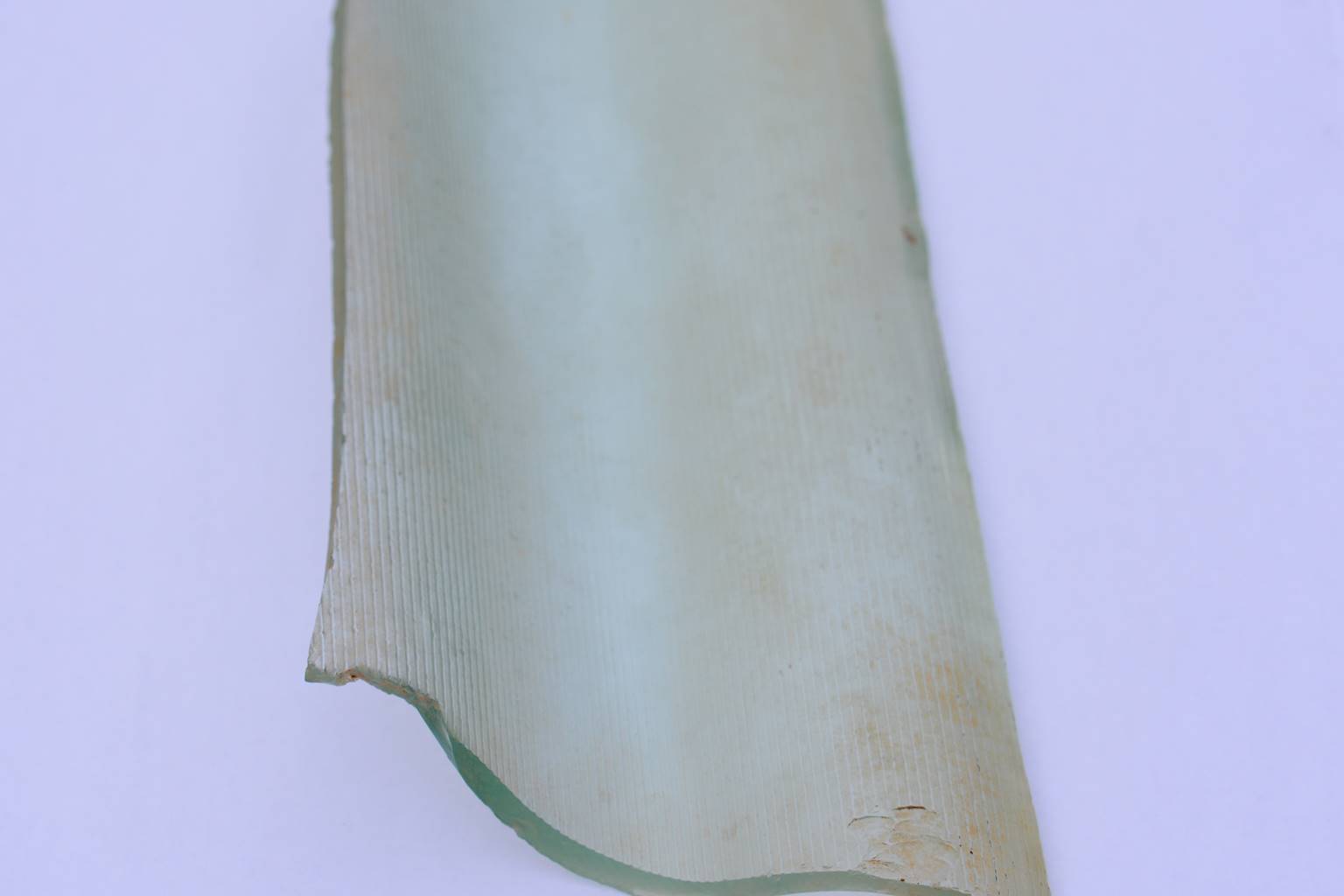Striated corrugated glass
38 views
Skip to first unread message
John Pickard
Mar 23, 2015, 9:13:17 PM3/23/15
to OzArch
Good afternoon everyone,
A few weeks ago I posted a question from an old friend about corrugated
glass in skylights in a wool shed built in 1899. Angus Crawford suggested glass
similar to a washboard, and I passed this idea to my friend, but not it.
He’s sent me an image of the glass, and it it is both corrugated and
striated with lines that appear to have been rolled into the surface.
Has
anyone come across this stuff before?
Cheers, John
John Pickard
john.p...@bigpond.com

Message has been deleted
Michael Lever
Mar 24, 2015, 1:56:39 AM3/24/15
to oza...@googlegroups.com
On Tuesday, March 24, 2015 at 3:12:20 PM UTC+11, Michael Lever wrote:
Looks to me like 20th century privacy glass (1920 is my earliest guess).Off the top of my head I cant think of a 19th century manufacturing method that would result in this.
Would it have fitted into a system something like this:?
Cheers
Angus Crawford
Mar 24, 2015, 5:58:48 AM3/24/15
to oza...@googlegroups.com
Since then I found out that rather than corrugated the term 'ridge and furrow' glass brimgs up a lot more info on the net! Used greatly in the 19th century in English green houses for strength and a diffused light. Hope this helps.
Angus
Angus
Michael Lever
Mar 24, 2015, 6:21:00 PM3/24/15
to oza...@googlegroups.com
I believe that "Ridge and Furrow Glazing" refers to the placement of small flat sheets of glass at an angle to each other so as to produce optimal diffusion of light. This was the technique used at Crystal Palace (see link below) and the Great Conservatory at Chatsworth.
Up to the early 20th Century, the only 3 available commercial methods of producing glass for glazing were: Crown, Cylinder, and Plate. None of these methods are capable of producing evenly corrugated and striated glass as per John's picture.
I'd still go with early 20th-Century at earliest.
Cheers,
Angus Crawford
Mar 25, 2015, 12:20:58 AM3/25/15
to oza...@googlegroups.com
My mistake, Michael, I should have read it a bit more closely.
I will admit that after 10 years of looking at large and small finds assemblages (including large quantities of Industrial material) in the UK I cannot recall seeing early glass of this type. Which is no help!
Reply all
Reply to author
Forward
0 new messages
